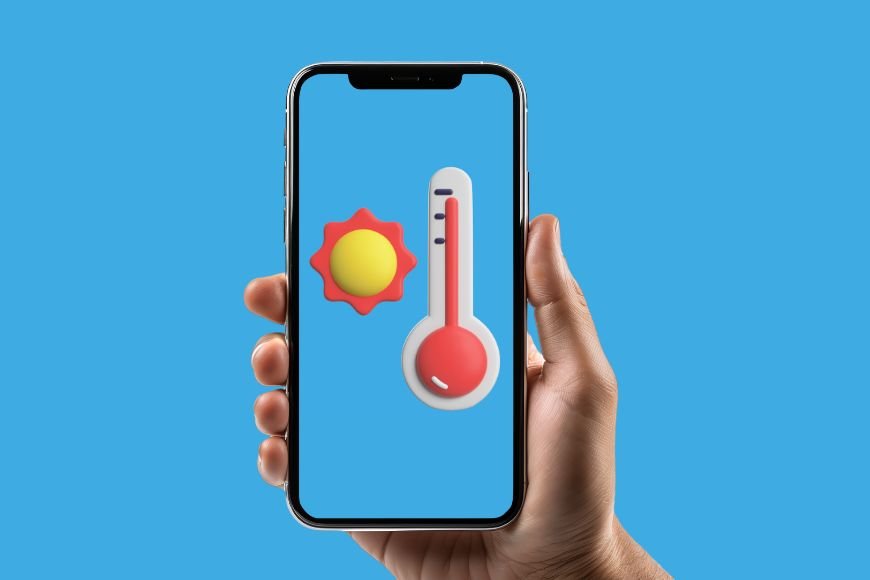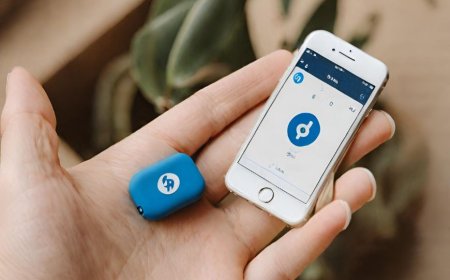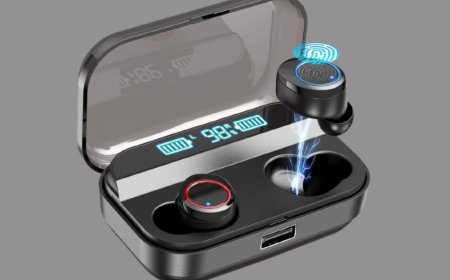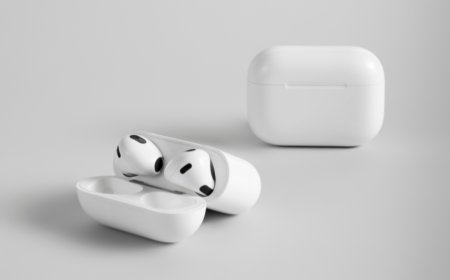Tips to Prevent Your Mobile Phone from Overheating
Is your mobile phone heating up faster than your coffee? Learn how to beat the heat and keep your device running like a breeze! Explore expert tips to prevent phone overheating.

Table of content
- Introduction
- Understanding Smartphone Overheating
- Overheating in iPhones
- Tips for Preventing Smartphone Overheating
- Additional Tips and Considerations
- Conclusion
Introduction
Is your phone getting heated at the worst possible times? We've all been there – in the middle of an important call or trying to beat our high score in a game, only to feel our device warming up uncomfortably. But fear not! In this guide, we'll delve into the common causes of phone overheating and equip you with practical solutions to keep your device cool and performing at its best. From avoiding direct sunlight exposure to closing background apps, we've got you covered. Let's dive in and ensure your phone stays cool as a cucumber, no matter what you're up to!
Brief explanation of why smartphones, including iPhones, overheat
Smartphones, including popular models like iPhones, are sophisticated electronic devices designed to handle various tasks efficiently. However, their compact size and powerful components make them susceptible to overheating. Processes such as running multiple apps simultaneously, performing processor-intensive tasks like gaming or video streaming, and exposure to high ambient temperatures can lead to increased heat generation within the device. Additionally, factors like software glitches, battery issues, and even the design of the device can contribute to device overheating.
Importance of preventing overheating for device longevity and performance
Preventing smartphone overheating is crucial for maintaining the device's longevity and ensuring optimal performance. Excessive heat can damage internal components, degrade battery health, and potentially lead to system failures or even safety hazards like battery explosions. Overheating can also cause performance throttling, resulting in slower operation and reduced responsiveness. By implementing preventive measures to mitigate overheating, users can extend the lifespan of their smartphones and enjoy consistent performance over time.
Understanding Smartphone Overheating
Causes of smartphone overheating
Smartphone overheating can be attributed to various factors, each contributing to the overall temperature rise within the device:
-
Processor-intensive tasks: Smartphones often heat up when performing demanding tasks that require significant processing power. Activities such as gaming, video streaming, or running multiple apps simultaneously can put a strain on the device's CPU and GPU, leading to increased heat generation.
-
External environment: The surrounding environment plays a significant role in smartphone overheating. Exposure to high ambient temperatures, particularly during hot weather or in direct sunlight, can cause the device's temperature to rise rapidly. Additionally, using the smartphone in environments with poor ventilation, such as inside a pocket or a tightly enclosed space, can impede heat dissipation and exacerbate overheating.
-
Hardware issues: Malfunctions or deficiencies in hardware components can contribute to overheating. For example, a defective or aging battery may generate excessive heat during charging or usage. Similarly, inadequate thermal management systems, such as insufficient heat sinks or cooling fans, can lead to heat buildup within the device. Additionally, physical damage to internal components or improper assembly during manufacturing can also result in overheating issues.
-
Software glitches: Software-related issues can also cause smartphones to overheat. Bugs, glitches, or inefficient coding in the device's operating system or individual applications can lead to excessive resource consumption, resulting in increased CPU usage and heat generation. Poorly optimized software may also fail to efficiently manage system resources, causing unnecessary strain on the hardware and contributing to overheating problems.
Overheating in iPhones
Specific factors contributing to iPhone overheating
Several factors unique to iPhones can contribute to overheating issues:
-
iOS updates: While iOS updates often bring new features and improvements, they can also impact the device's thermal management. Changes in system processes or background tasks introduced in updates may affect how the device manages heat, potentially leading to increased temperature levels.
-
Processor efficiency: iPhones are equipped with powerful processors designed to deliver high performance while maintaining energy efficiency. However, intensive tasks such as gaming or video editing can still strain the processor, causing it to generate heat. Variations in processor efficiency across different iPhone models and generations can also influence heat dissipation and overall thermal performance.
-
App optimization: The efficiency of third-party apps installed on iPhones can impact device temperature. Poorly optimized apps may consume excessive system resources, such as CPU and memory, leading to increased heat generation. Additionally, apps running in the background or experiencing software glitches may contribute to overheating issues, particularly if they continuously engage system resources without proper management.
Addressing the iPhone heating problem requires understanding these unique factors and implementing strategies to optimize thermal performance and prevent overheating
Tips for Preventing Smartphone Overheating
Avoid Direct Sunlight Exposure
Smartphones are susceptible to overheating when exposed to direct sunlight for prolonged periods. Sunlight can increase the device's temperature significantly, especially during hot weather conditions. To prevent overheating due to sunlight exposure, consider the following suggestions:
- Keep the phone in the shade: Whenever possible, avoid leaving your smartphone in direct sunlight. Find a shaded area or use a cover to protect the device from direct sunlight exposure.
- Use a cover or case: Utilizing a cover or case with light-reflective properties can help mitigate heat absorption from sunlight. Opt for covers specifically designed to provide thermal insulation and protection against overheating.
Limit High-Performance Tasks
Performing processor-intensive tasks such as gaming or video streaming can strain the device's CPU and GPU, leading to increased heat generation. To prevent overheating resulting from high-performance tasks, consider the following suggestions:
- Limit usage or take breaks: Avoid prolonged sessions of gaming or video streaming, especially in environments with poor ventilation or high ambient temperatures. Take periodic breaks to allow the device to cool down and reduce the overall thermal load.
Close Background Apps
Running multiple apps simultaneously can consume significant system resources and contribute to overheating. To prevent overheating caused by background apps, follow these instructions:
- Close unused apps: Regularly close background apps that are not actively in use. Most smartphones provide a multitasking interface or task manager that allows users to view and close background apps efficiently.
Keep Your Software Updated
Software updates often include fixes and optimizations for overheating issues, along with other improvements in performance and stability. To prevent overheating related to software issues, consider the following suggestions:
- Regularly update the device: Ensure your smartphone's operating system and applications are up-to-date with the latest software updates. Manufacturers often release updates to address known issues, including those related to overheating and thermal management.
Use Airplane Mode in Poor Signal Areas
Searching for a signal in areas with weak cellular reception can increase the device's temperature as it continuously scans for network connectivity. To prevent overheating in poor signal areas, consider the following suggestions:
- Enable airplane mode: In areas with weak signal reception or when not actively using cellular services, enable airplane mode to disable wireless communication functions. This prevents the device from expending unnecessary energy and generating excess heat while searching for a signal.
Avoid Overcharging
Overcharging the smartphone battery can lead to heat buildup and potentially shorten the battery's lifespan. To prevent overheating caused by overcharging, consider the following suggestions:
- Use a charger with automatic shutoff: Invest in a charger equipped with automatic shutoff or smart charging features. These chargers automatically stop charging the device once it reaches full capacity, reducing the risk of overcharging and overheating.
- Charge in short bursts: Instead of leaving the device plugged in for extended periods, charge it in short bursts whenever possible. Disconnect the charger once the battery is sufficiently charged to avoid prolonged exposure to heat from the charging process.
Implementing these tips can help prevent smartphone overheating and ensure optimal performance and longevity of your device.
Additional Tips and Considerations
Importance of using manufacturer-approved accessories
Using accessories approved by the smartphone manufacturer is crucial for maintaining the device's safety and performance. Non-approved accessories, such as chargers or batteries, may not meet the required standards and can pose risks of overheating, short circuits, or other electrical hazards. To ensure the safety and optimal operation of your smartphone, always use accessories recommended or provided by the manufacturer.
Considerations for using cases and covers
Cases and covers not only offer protection against physical damage but also play a role in managing smartphone temperature. When selecting a case or cover for your device, consider the following factors:
- Material and design: Opt for cases made from materials that provide adequate ventilation and heat dissipation, such as thermally conductive materials or designs with ventilation slots. Avoid cases that tightly enclose the device and restrict airflow, as they can trap heat and contribute to overheating.
- Fit and compatibility: Ensure the case or cover fits the smartphone properly without obstructing ports, buttons, or ventilation openings. A well-fitted case allows for proper airflow and heat dispersion while providing necessary protection against overheating.
Monitoring device temperature using third-party apps
Monitoring the temperature of your smartphone using third-party apps can help identify overheating issues early and take preventive measures accordingly. There are various apps available on app stores that allow users to monitor the device's temperature in real-time and receive alerts if it exceeds safe thresholds. When using temperature monitoring apps, consider the following:
- Accuracy and reliability: Choose reputable temperature monitoring apps with positive reviews and high ratings to ensure accurate and reliable temperature readings.
- Battery impact: Be mindful of the potential impact on battery life and performance when running temperature monitoring apps in the background. Select apps that are lightweight and optimized to minimize battery drain while providing accurate temperature monitoring.
By considering these additional tips and considerations, you can further enhance the safety, performance, and longevity of your smartphone while effectively managing overheating issues.
Conclusion
In conclusion, safeguarding your smartphone from overheating is paramount for ensuring its longevity and maintaining optimal performance. By implementing the preventive measures outlined in this guide, including avoiding direct sunlight exposure, limiting high-performance tasks, closing background apps, keeping software updated, using airplane mode in poor signal areas, and avoiding overcharging, you can effectively mitigate the risk of overheating. Additionally, paying attention to additional tips such as using manufacturer-approved accessories, selecting suitable cases and covers, and monitoring device temperature using third-party apps can further enhance the safety and performance of your smartphone.
Remember, a well-maintained smartphone not only operates smoothly but also extends its lifespan, saving you time and money on repairs or replacements. By adopting these practices as part of your smartphone care routine, you can enjoy uninterrupted usage and peace of mind knowing that your device is protected against the adverse effects of overheating. So, take proactive steps today to keep your smartphone cool, efficient, and ready for whatever tasks lie ahead.
What's Your Reaction?












































































